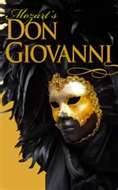Of course, for all you Brit history fans, it calls to mind the infamous, and never caught, Jack The Ripper! All his horrendous murders took place in the dodgy east end section of London called Whitechapel.
 This new production, set in modern-day London, pits a new and energetic detective inspector against a copy-cat Ripperesque murderer, the action taking place in the Whitechapel area. This enthusiastic DI steps into a rather jaded group of police men, who aren't a very big help at all. They laugh at his theory that someone is committing Jack-style serial murders, until a pattern starts emerging! Aha! He who laughs last laughs best!
This new production, set in modern-day London, pits a new and energetic detective inspector against a copy-cat Ripperesque murderer, the action taking place in the Whitechapel area. This enthusiastic DI steps into a rather jaded group of police men, who aren't a very big help at all. They laugh at his theory that someone is committing Jack-style serial murders, until a pattern starts emerging! Aha! He who laughs last laughs best!Anyway, I started investigating Whitechapel, and found some interesting things that happened in the area before the famous crimes (a product of the late 1800's).
 In May 1797 a sailor named Richard Parker was hanged for leading the Nore Mutiny (a port area down the Thames), and was given a Christian burial at St. Mary Matfelon in Whitechapel after his wife exhumed his body from unconsecrated ground, the site of the original burial. Crowds gathered to see the body and honor the man who played a major role in the mutiny, in what is called "THE FLOATING REPUBLIC".
In May 1797 a sailor named Richard Parker was hanged for leading the Nore Mutiny (a port area down the Thames), and was given a Christian burial at St. Mary Matfelon in Whitechapel after his wife exhumed his body from unconsecrated ground, the site of the original burial. Crowds gathered to see the body and honor the man who played a major role in the mutiny, in what is called "THE FLOATING REPUBLIC".Parker was assigned to the HMS Sandwich, regarded as one of the worst ships of squalid and overcrowded conditions. Parker organized the mutineers, and was eventually appointed as "President of the Delegates of the Fleet". The mutineers created a blockade of the Thames, with only ships bearing a pass sign allowed to continue up river.
In June of that year, he organized a meeting to submit a petition and ultimatum addressed to the Fleet of the sailor's grievances, but increasing tension led his fellows to abandon him, and then the government put a price on his head. There was a reward for turning him in of 500 pounds, (equivalent to 40,000 today - about $60,000). Parker was arrested on June 13, and executed on board the Sandwich.
Fortunately for him, he was not publicly"gibbetted" after death, the term for further assault on the body. Yikes! (Remember the cutting off of limbs and having them sent to the four corners of the land?!)
By the way, the St. Mary of Matfelon Church has an interesting aspect to its name. The church is situated prominently in the center of town, where in the 18th Century, the population was expanding with more and more people moving in to take up industrial positions in the factories nearby. The word "matfelon" supposedly comes from the Hebrew word "matfel" which signifies a woman recently delivered of a son -- the Virgin Mary, in other words, or Mary matri en filio, corrupted to Matfelon. Interesting, as there were many Jews that were situated in this east-end area.
Also, the name Whitechapel stems from the many white washed buildings, including the church, that stood at the time.






























_2.jpg)










